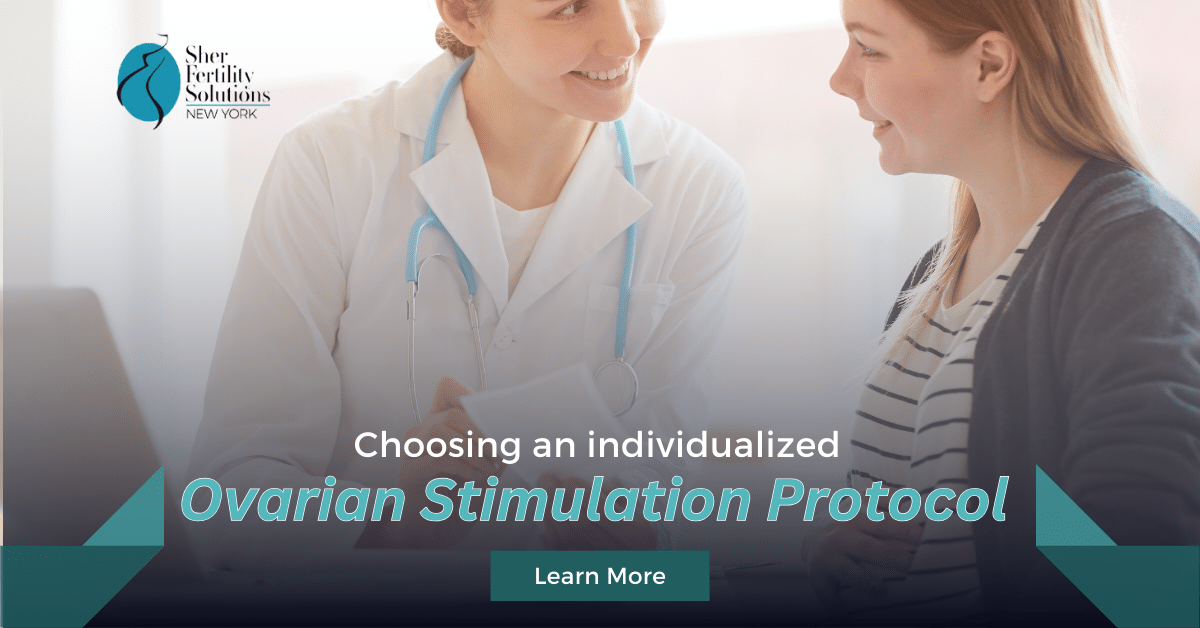The Importance of Tailored Ovarian Stimulation Protocols
Selecting the right ovarian stimulation protocol is one of the most crucial steps in the IVF process. There’s no “one-size-fits-all” approach; each protocol must be tailored to the individual.
The ovaries have two main compartments: follicles (the dark areas seen on an ultrasound) and the stroma or theca (the white outer perimeter surrounding the follicles). The stroma produces male hormones like testosterone, which is essential for follicle development because it is converted into estrogen (estradiol), thereby promoting both follicle and egg development.
Testosterone travels from the stroma to the granulosa cells lining the inside of the follicles. Under the influence of FSH (Follicle Stimulating Hormone), testosterone is enzymatically transformed into estrogen, causing the follicles to grow and fill with fluid. We use ultrasound to measure follicle size and blood tests to check estradiol levels to monitor development.
While some ovarian testosterone is essential for follicle growth and egg development, too much can hinder development, causing arrest in follicle growth and hindering eggs to mature properly, thereby increasing the chances of egg chromosomal irregularities (aneuploidy) following LH or hCG-induced division (meiosis), which plays a critical role in determining the chromosomal integrity of the fertilized egg (embryo) and thus its “competency” (the ability, upon implantation, to propagate a normal pregnancy). This is especially crucial and can be determinative in the chance of an embryo having an irregular quota of chromosomes (aneuploidy) and thus being “incompetent,” leading to early pregnancy loss or developing into a chromosomally abnormal baby (e.g., Down syndrome). In this regard, older women and those with diminished ovarian reserve (DOR) are the most vulnerable. In IVF, the “hCG/LH trigger” is crucial because it initiates meiosis.
The goal of controlled ovarian stimulation (COS) is to ensure that eggs mature without being exposed to excessive testosterone. LH (Luteinizing Hormone) from the pituitary gland or medication induces ovarian testosterone production. High LH levels are often seen in older women, those with polycystic ovarian syndrome (PCOS), or those with DOR. This is why administering medications like clomiphene or Letrozole to such women can augment LH production and is, in my opinion, best avoided.
To delve deeper into this fascinating topic, be sure to watch Dr. Sher and Dr. Aimee on “The Egg Whisperer Show” in the episode titled “Best Ovarian Stimulation Protocols for IVF”.
Customizing the Ovarian Stimulation Protocol
To optimize egg and embryo quality, it’s important to control follicle exposure to testosterone by customizing the ovarian stimulation protocol for each patient. I often start patients on a birth control pill (BCP) to suppress LH. This helps regulate the timing of the menstrual cycle and prepares the ovaries for stimulation. The birth control pill is administered for about 10 days and is then overlapped with a GRH agonist (e.g., Lipton, Buserelin, Decspeptyl, etc.) for a few days, whereupon the birth control pill is discontinued while the agonist is continued until the period comes a few days later. At this time, depending upon whether the woman has high/normal ovarian reserve or has DOR, the Lupron may be continued throughout the stimulation until the “trigger” or is promptly supplanted by daily injections of a GnRH antagonist (e.g., Orgalutron, Cetrotide, Ganirelix) until the administration of the “trigger”. I usually prescribe a modest dosage of human growth hormone by daily injection, starting with the onset of GnRH agonist therapy and discontinuing on the day of the “trigger”.
Protocol for Older Women or Those with DOR
When it comes to gonadotropin follicle stimulation, I typically prescribe a combination of recombinant FSH products (e.g., Follistim, Gonal-f, Puregon) and menitropin (e.g., Menopur). For older women or those with DOR, I switch from the GnRH agonist to a GnRH antagonist at the start of their period to avoid suppressing the response to FSH (the Agonist/Antagonist-conversion protocol—A/ ACP).
Protocol for Low Ovarian Reserve
In some cases, I use “estrogen priming” to improve follicle development in women with very low ovarian reserve. This involves daily estrogen skin patches or injections for a few days before starting gonadotropin therapy.
When it comes to older women or those (regardless of their age) who have DOR, I purposefully avoid using clomiphene or Letrozole because such women commonly have increased pituitary LH production. For the same reason, I recommend against Mini IVF or natural cycle IVF in these cases.
Protocol for High Responders and OHSS Risk
For high responders at risk of ovarian hyperstimulation syndrome (OHSS), I often prescribe a method I first described many years ago called “prolonged coasting”. This safely lowers estradiol levels before triggering ovulation. This helps avoid the risk of OHSS while maintaining egg quality. An alternative approach is to “trigger” with a GnRH agonist alone or in combination with low-dosage hCG. This will also diminish the risk of OHSS considerably.
Protocol for Younger Women with Normal Ovarian Reserve
For younger women with normal ovarian reserve who prefer to use a lower dosage of gonadotropin fertility drugs, I offer EZ-IVF, which uses lower doses of gonadotropins, I listed every other day.
Ultimately, the COS protocol must be individualized based on the patient’s age, ovarian reserve, and previous responses to stimulation. More eggs are often needed for older women, while younger women may need fewer follicles to achieve success. Customizing the protocol ensures the best possible outcomes for each patient.


